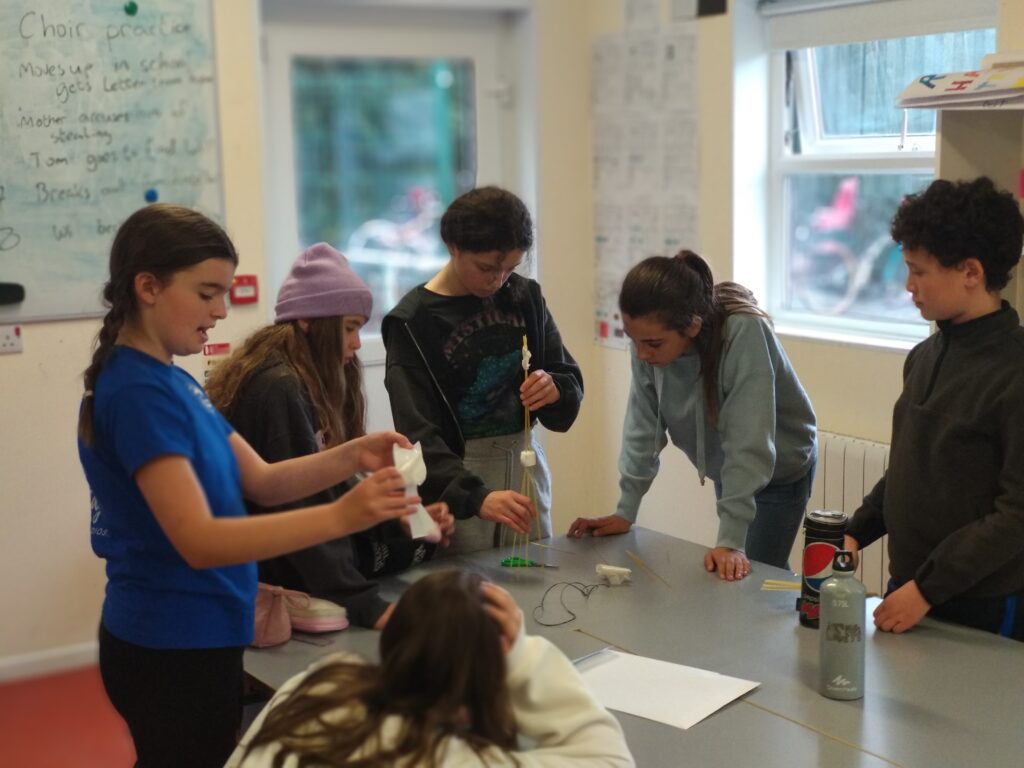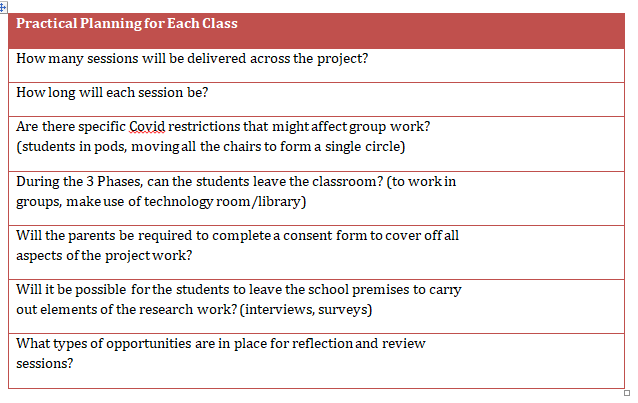Planning
Creating “Something Different”
While the project will take place during the school day and for the most part in the classroom, the students need to feel that they are not doing their normal work, they need to feel that when they are carrying out CEPNET activities, that they are involved in “something different”.
So before the initial classroom activity begins, it is important to plan for different approaches to the usual school-day. The CEPNET project operates over three separate phases, so here are some considerations:
Discussion Phase
Phase 1 involves discussion and dialogue in relation to the key issues. To make this different, there are a suite of games and activities that can be employed. From ice-breakers to specific SDG-related games, the aim is to encourage the children to actively contribute to a discussion. The aim is that they are developing specific interests as this phase progresses. They may be interested in a specific environmental issue that can be encouraged. Some may need more stimulus to create a spark of interest. The games can be used to assist in this aspect. In the following section, these games are described and links are provided.
Other activities in this phase can focus on the students looking at the types of values or principles linked to the CEPNET approach, as well as on specific SDGs. Posters can be developed and through art based activities, discussion can be encouraged.
At the beginning of each session, a “check-in” round can be done, whereby each child has to indicate their energy levels or happiness levels or a fact about their day, etc. This type of ice-breaker allows for a clear distinction to be made between what has gone before and their CEPNET activities.
Research Phase
Phase 2 is focused on research. During Phase 1, the student develops an idea or interest that can be turned into a research question. Their focus now changes from debate and discussion to articulating a question that they want to answer. Phase 2 then supports them to become critical, start thinking more deeply about the subject and to work out what they would like to research. Some students may prefer to work in a group, some individually. As the research focus becomes identified, the teachers and researchers step back. Where support is asked, it can be provided, but the aim is that the children will take on the initiative to find out new information. They will need to describe this and find ways of collecting the information. They will need access to the online world, they may want to carry out a questionnaire, they may need to interview or phone people. The aim of this phase is that they carry out their fact-finding missions themselves.
How they choose to pull the information together will again be down to them. They may want to make a poster, produce a PowerPoint presentation or even a report on their new information. They may be more creative and use rap, rhyme or art. They may use more digital tools, such as a podcast, video or a sound recording. As they look to create a means to demonstrate the results of their research, again, the adult is in the background, offering support when asked.
Presentation Phase
Phase 3 provides the space for the students to now think about how they will organise action associated with the learning. Some students may have already started this through Phase 2; others may have waited until the research work is completed before they start planning on what they will do with it in terms of a presentation. A key feature of the methodology is that the students are involved in a process that is leading them to take action. They have already discussed and debated the issues, before finding their specific interest. They have then taken that through a phase of research to find out something new. They may have carried out this research with a group of friends or on their own. They may have interviewed or surveyed members of the school community or the wider area. They may have developed their research results into a report or a poster or a video.
Phase 3 now focuses on what they will do with this research product. They may decide to link it to a school event, where they can present their findings. They may seek to present their work to a political or social or sporting body in their community. They may upload their podcast to a national website and give an interview to a radio show. They will decide how they want to take action. Again, the adults can provide support, but in the background.
Within each of these phases, the key focus for the teachers and the researcher is to give the keys of the car to the children and allow them to drive the lessons. It is no problem to provide support if and when some students are struggling to take the next step.

Planning Practicalities
Before the work can begin, some pre-planning work has already taken place to look at the teacher awareness of the methodology and some practical concerns associated with the classroom and the numbers of children involved. A second layer of planning is now required to examine practical implementation issues in relation to the sessions and how these will be managed.
The following table addresses some of these practical concerns. This table can be refined for each school if useful in assisting the planning process.

Tried and Tested Resources
All resources that have been developed during the previous projects are available through this site. These are primarily linked to the three phases of work, but many of the tips or ideas can be used at any stage. For example, a group exercise in the form of a spaghetti marshmellow game can take place across each phase. This section is based on examples of good practice and feedback received from participants and teachers. New resources will be added to this repository as they are introduced and tested.
Icebreakers and Games
Useful games that have been used by practitioners will be presented. Many of these games and activities have been developed with the intention to encourage children to get to know about the SDGs. In some instances, these games require the printing out of new materials for the classroom.
A list of icebreakers and other strategies that can be used to ensure that the class is always immediately aware that they are moving from “schoolwork” to CEPNET work.
Link to this set of icebreakers
Lesson Plans
Sample lesson plans will also be available within these online repositories. Where teachers are seeking structured support to assist in the delivery of each lesson, plans will be developed to cover a 12 week programme where classroom procedures for each CEPNET Phase can be found.
Each teacher can access these resources where they require this support or to gather insights.
For each phase to be delivered successfully teachers may decide to use these plans as a set of guidelines or a framework, there is no need to follow each lesson plan to the full. A resource is also in place demonstrating these lesson plans as a set of Powerpoint Slides.
Link to set of lessons.
Evaluation Templates
Each teacher can examine the optimal means of gathering feedback from the children in relation to how they have experienced each lesson and each phase. Where practical, the children will be encouraged to offer their feedback on a regular basis.
Innovative approaches such as using art or posters to gather feedback can be used. Students can be encouraged to find examples of how they have developed new skills or knowledge bases. It is more challenging to examine how their attitudes may have been impacted, but efforts will be made to try and capture their progress. This will be especially important during Phase 3.
A 360 degree approach can be used whereby, the students will self-assess, gather feedback from their peers and will also get feedback from their teacher. This process will focus positively on one of the thematic concerns, CEPNET principles as well as the practical achievements. They will in turn receive a CEPNET Certificate on completion of the 3 Phases.
Link to these templates (evaluation and certificate)
Establishing the Student Council
During the pre-planning and planning work, the teachers can determine how best to gather candidates for local student councils, who will feed into the overall CEPNET council. The local council can have its own functions in relation to supporting the implementation of the project in the school. Where there are partner schools involved, the local councils will work closely to oversee the joint projects.
This joint CEPNET council, once established, will play an active role within the overall project planning and their input will be considered as a valuable contribution to project review. Every effort will be made to ensure that the students serving on the council are supported fully to act as representatives of their peers during the project activities.
Summary of Planning Steps
The preparation for the initial student engagement will involve the following steps to be completed by the teachers with the support of their research partners
- Reflect on how classroom can be made feel different
- Complete the planning questions
- Consider the types of resources required
- Review lesson plans to see if you need them
- Start planning for Student Council selection

